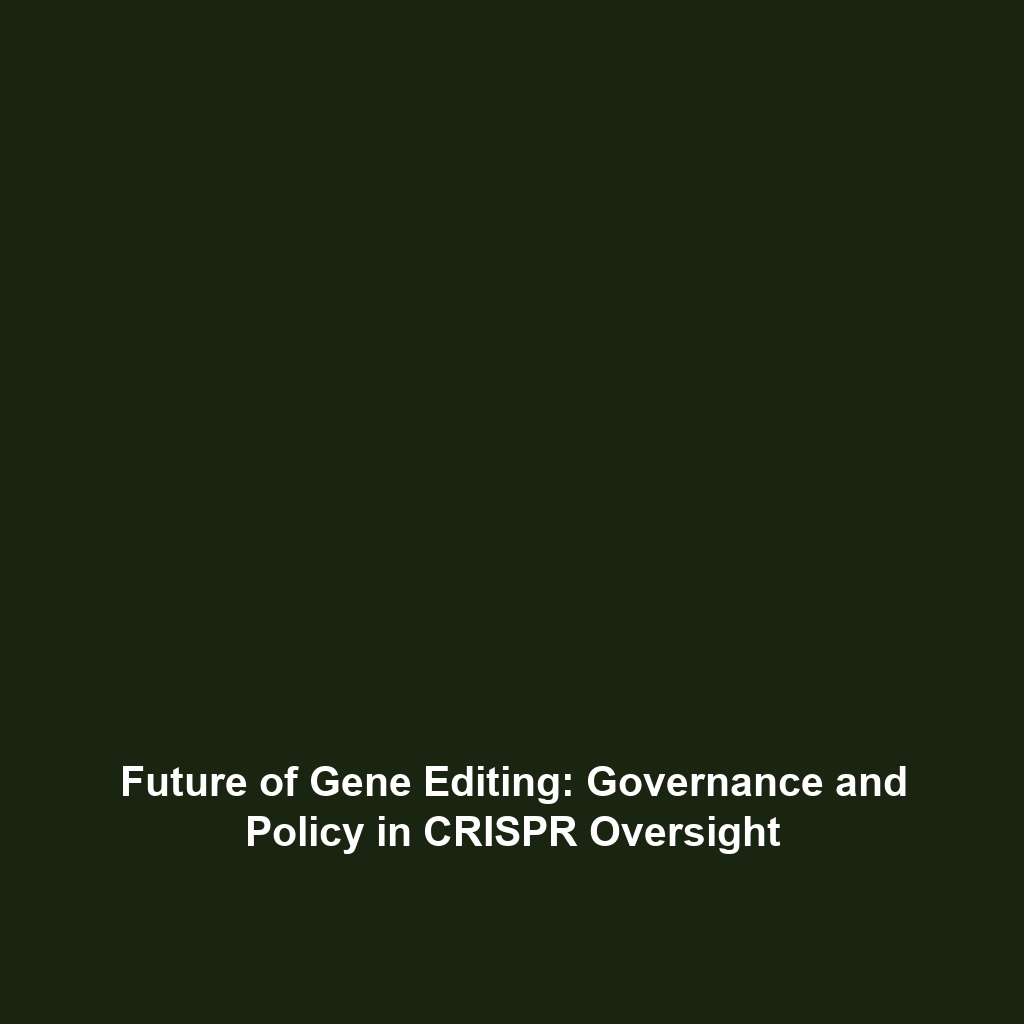Future Policy and Governance: Shaping the Future of Gene Editing Oversight
The evolution of CRISPR gene editing technology brings forth critical questions surrounding the governance and policy frameworks required for ethical oversight. As we stand on the brink of groundbreaking advancements in genetic engineering, shaping the future policy concerning gene editing is essential. Proper governance will not only mitigate potential risks but will also ensure that the immense benefits of CRISPR technology are harnessed responsibly. This article explores the implications and necessities of robust governance in the domain of gene editing.
Key Concepts
Understanding the framework of Future Policy and Governance within the realm of CRISPR gene editing involves several key concepts:
- Ethical Oversight: Developing ethical guidelines that dictate the use and application of CRISPR technology in humans and ecosystems.
- Regulatory Frameworks: Establishing legal norms and regulations that govern research and application procedures for gene editing.
- Public Engagement: Encouraging dialogue with communities and stakeholders to ensure transparency and acceptability of gene editing practices.
- Global Collaboration: Promoting international policies that align with global standards to prevent misuse and promote equitable access to technologies.
Applications and Real-World Uses
The governance of CRISPR gene editing technology is integral to numerous real-world applications. Here are some prime areas where effective policy shapes its use:
- Healthcare Innovations: How Future Policy and Governance is used in the context of genetic therapies, such as tailored treatments for genetic disorders.
- Agricultural Improvements: Applications of Future Policy and Governance in the development of pest-resistant crops, ensuring environmental safety.
- Environmental Conservation: Utilizing governance frameworks to oversee CRISPR’s role in biodiversity restoration projects.
Current Challenges
The evolution of Future Policy and Governance must navigate several challenges:
- Scientific Uncertainty: The challenges of predicting the long-term effects of gene editing on ecosystems and human health.
- Regulatory Inconsistency: Issues in navigating varying regulations across countries that may lead to confusion and illegal practices.
- Public Mistrust: Overcoming skepticism and fear from the public regarding gene editing technologies and their implications.
Future Research and Innovations
The horizon for Future Policy and Governance in the field of CRISPR gene editing is promising, with ongoing research addressing several innovative areas:
- Policy Development Frameworks: Innovations in creating adaptable governance frameworks that evolve with scientific advancements.
- Next-Generation Technologies: Breakthroughs in CRISPR applications that necessitate new policies and guidelines for safe exploration.
- AI and Machine Learning: Utilizing AI to enhance regulatory mechanisms to monitor and evaluate gene editing practices.
Conclusion
The future of CRISPR gene editing hinges on thoughtful and comprehensive Future Policy and Governance. Ensuring ethical oversight, regulatory clarity, and public trust is crucial for unleashing the full potential of gene editing technologies. Stakeholders, including researchers, policymakers, and the public, must engage collaboratively to navigate the ethical implications and regulatory requirements of these transformative technologies. For more information on gene editing ethics, visit our Gene Editing Ethics page.
